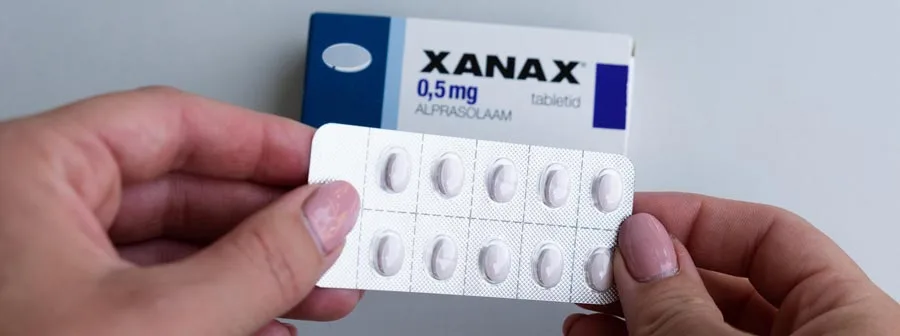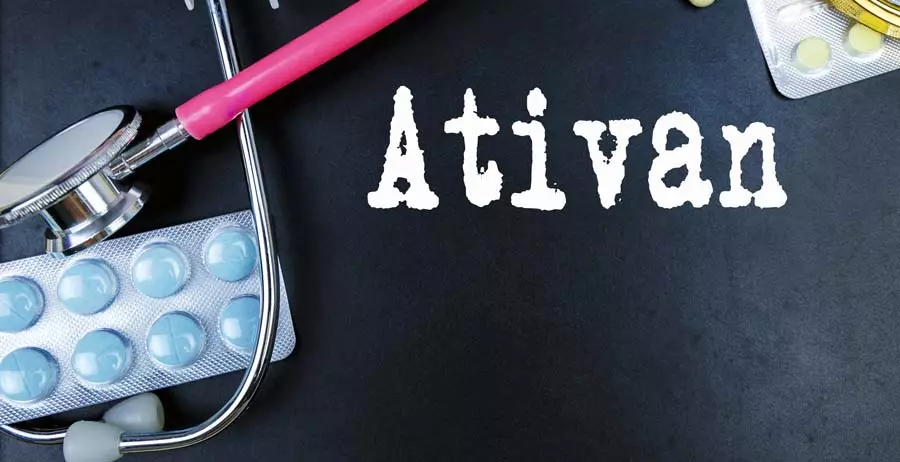In the battle against the problematic symptoms of anxiety, many individuals turn toward prescription drugs as a means to find relief. Many options exist for patients seeking a remedy for the many adve
Klonopin Addiction
Table of Contents
Effects of anxiety, including Xanax, Valium, and Ativan.
Debates regarding the abuse of anti-anxiety medication, or benzodiazepines, are typically centered around Xanax or Valium. These two are the most commonly abused forms of benzos, allowing other addictive drugs in this class to pass under the radar at times.
One substance that fails to grab headlines for potential abuse is Klonopin. Although many people may not see Klonopin as a dangerous drug, the lack of attention certainly makes it less harmful. What is this less infamous benzo, and why is it so dangerous in the world of addiction?
What is Klonopin?
Clonazepam, better known by its brand name Klonopin, is a medication used to treat the symptoms of seizures, anxiety, and panic disorders. This medication belongs to a class of drugs known as Benzodiazepines, including infamous medicines like Valium and Xanax.
Klonopin comes in doses of 0.5, 1, and 2 mg and is usually a light-yellow powder. Pressed into pill form, Klonopin is typically the same light-yellow shade and has a “K” engraved into one side of the tablet. Clonazepam is generally prescribed for panic and anxiety, although several different symptoms may warrant a physician issuing this prescription.
Klonopin for Anxiety
Taken as direct, Klonopin is effective at treating anxiety and panic disorders. When taken, the medication can start kicking in after only 15 minutes, making it helpful in treating even sudden bouts of anxiety. How exactly do these small yellow tablets alleviate something as severe as acute panic and anxiety disorder in such a short amount of time?
Klonopin influences the gamma-aminobutyric acid (GABA) receptors, which are neurotransmitters responsible for regulating functions like anxiety, sleep, excitement, and relaxation. By doing this, the medication slows down the central nervous system, thus decreasing nervousness and promoting a calm, relaxed feeling.
However, it’s almost a given that something this effective and fast-acting doesn’t come without cons. Klonopin has several unsavory side effects, which could be at least partially to blame for its potential for abuse.
Klonopin Side Effects
The side effects of Klonopin vary greatly, depending on the dosage strength a user ingests. An individual using Klonopin may notice some or all of the following side effects:
- Fatigue
- Issues with balance or coordination
- Dizziness
- Drowsiness, trouble staying awake
- Short term memory loss
The side effects of a substance like Klonopin are always more severe when an individual first begins taking the medication. Gradually, these feelings may start to subside and become less intense after more extended periods of use.
How long does it take for a user to get used to their Klonopin dose? The answer to this weighs heavily on the specific dose prescribed and the frequency of ingestion. Klonopin comes in several strengths, with a physician’s dosing times and amounts based on the patient.
Klonopin Dosage
The exact dosage prescribed for Klonopin depends on the severity of the patient’s condition in question and is at the discretion of the prescribing physician. However, a general set of guidelines is recommended for doctors when prescribing this medication.
When a patient is first prescribed Klonopin for anxiety disorder, the recommended dose is 0.25 mg twice per day. Typically, the target dose for most individuals is 1mg per day, which is usually met within a target range of three days. In studies, doses of 2, 3, and 4 mg per day were less effective than the former and had more potential for adverse side effects.
With this being said, many individuals increase to doses up to 4mg per day. The amount is generally increased in increments of .25 mg twice daily every three days until anxiety disorder symptoms are under control.
One particularly alarming statistic has recently led to the scrutiny of physicians for the dosage levels of Klonopin prescriptions. Since 1999, overdose deaths involving benzos have increased from 1,135 to 11,537. Additionally, the overall number of patients prescribed benzos had risen by about 50% between 2005 and 2015.
Observing a spike in overdoses such as this, coupled with the number of patients receiving prescriptions for benzos doubling, begs an important question. Are doctors overmedicating their patients with drugs like Klonopin?
Klonopin is one of the more recent benzos to spotlight potential abuse issues, but it’s certainly not the first. Xanax, another infamous anti-anxiety medication, has come under fire for its addictive properties and affinity for deaths when coupled with the use of opioids.
Besides falling under the same class of prescription drugs, what else do these two medications have in common? Is one any worse than the other in terms of the potential for abuse or risk of overdose?

Klonopin vs. Xanax
Klonopin and Xanax are both drugs known as benzodiazepines prescribed to relieve anxiety and panic disorder symptoms. Generically, Klonopin is known as clonazepam, and Xanax is known as alprazolam. Although they are both prescribed for the same conditions, there are notable differences between the two drugs.
Uses
Xanax is prescribed almost exclusively for panic and anxiety disorder. Klonopin is also prescribed for the same conditions the majority of the time; however, it’s used to combat epilepsy in certain cases.
Duration
Xanax acts much faster than Klonopin, reaching its peak concentration in the blood within 1 hour, with effects lasting for up to 6 hours. Klonopin can take up to 4 hours to reach peak concentration but is effective for up to 12 hours.
Because of the long window, Klonopin doesn’t require dosing as frequently as Xanax and still has the potential to keep anxiety symptoms at bay if an individual misses a dose. Xanax, on the other hand, must be taken regularly to maintain its effectiveness against the symptoms of anxiety.
Do these differences in duration equate to one being stronger than the other? These medications are formulated in similar dose sizes. Still, Xanax is normally ordered to be taken more frequently throughout the day, with a much higher total daily dose.
Potency and Dosing
Usually, Klonopin is prescribed between 0.25 and 1 mg, taken once per day, with a maximum of 4 mg. However, Xanax is ordered to be taken every 4-6 hours at doses between 0.5 and 4 mg, with no more than 10 mg per day.
There haven’t been a large number of clinical studies comparing the strength of these two medications. However, during the limited number of tests that have taken place, there were no reported differences in the side effects or effectiveness of these two benzos.
Equivalency tables exist between pharmaceutical medications prescribed for similar symptoms. In the case of Xanax and Klonopin, the tables state that 0.5 mg of Klonopin is equal to 0.5 mg of Xanax, with no difference as the strength increases.
Benzos have some of the highest rates of addiction among all prescription medications, with reports of severe withdrawal symptoms that often require hospitalization. Because of the strength of these two medications appearing to be identical, does this mean they have an equal chance of becoming habit forming?
Dependence and Withdrawal
When benzos are taken regularly, it’s not uncommon for an individual to become dependent on these types of medications in as little as 14 days. In studies, more than 50% of users reported total dependency after six months of continued use.
Unlike Xanax, Klonopin lacks clinical research regarding addiction and withdrawal. The former, however, has been the subject of numerous testing in this field of study.
A severe addiction, accompanied by an intense rebound and withdrawal symptoms, is reported with prolonged Xanax use. The half-life of Xanax is between 9 and 20 hours, compared to the 19 to 60-hour half-life of Klonopin.
The half-life of a medication is defined as the amount of time it takes for 50% of medication to leave a user’s body. Historically, the blood levels of medicines with longer half-lives remain more constant, typically making the withdrawals less severe.
Based on these facts, one is led to believe that the withdrawals from Klonopin may be less intense than those of Xanax. However, this difference isn’t enough to make them any less dangerous or deadly.
The symptoms from benzo withdrawal include irritability, sweating, dizziness, vertigo, confusion, psychosis, and seizures. In the most severe cases, withdrawals from benzodiazepines have contributed to the deaths of users attempting to detox.
Another popular anti-anxiety medication, Ativan, shares these withdrawal symptoms and is in the same family as Klonopin. How does the potency of Ativan measure up against those of Klonopin?

Klonopin vs. Ativan
Lorazepam, better known by its brand name Ativan, is another medication that falls into the benzodiazepine category. Like Klonopin, Ativan is known as intermediate-acting benzo because of its long-lasting effects. When Klonopin and Ativan are compared, there are several similarities between the two.
Uses
Ativan is similar to Klonopin in the fact that it is also used as a seizure medication. However, when it comes to treating anxiety and panic disorders, Ativan is slightly different.
Klonopin is used to treat general anxiety and panic disorders, while Ativan is used to treat anxiety resulting from depression. Another notable difference is that the latter is prescribed to children as young as 12-years-old and is used as a primary treatment for insomnia.
Duration
There is also a slight difference in the length of time these two medications remain effective. Ativan normally begins to act within 30 minutes and reaches its peak around the 2-hour mark. Typically, it remains effective for up to 10 hours in most patients. This is slightly less than the 12-hour duration of Klonopin.
This would lead one to believe that Klonopin is a slightly stronger medication. Let’s examine how Ativan compares to Klonopin regarding potency and dosage.
Potency and Dosing
Ativan is manufactured in doses similar to Xanax and Klonopin, with available 0.5, 1, and 2 mg tablets. The typically prescribed dose for this drug is 1 to 3 mg, taken one to three times daily. Average daily doses of Ativan are anywhere from 6 to 10 mg.
In multiple studies, Klonopin and Ativan were found to be similar in strength, having similar effects for the treatment of anxiety. However, during the studies, patients reported fewer side effects from Klonopin than from Ativan. 26% reported adverse side effects from the former, while 46% reported adverse reactions from the latter.
Do higher levels of side effects in Ativan make it more addictive than Klonopin? What about the withdrawal symptoms?
Dependence and Withdrawal
Klonopin and Ativan are both used as second-choice medications for battling anxiety and panic disorders. This means that at least one other medication and one non-medication alternative are prescribed before resorting to either of these prescription drugs.
The label of second-choice medications was earned because of the potential for addiction in both of these medications. Realistically, one is no more or less addictive than the other. Additionally, they also share a painful withdrawal period with dangerous symptoms.
Headaches, tremors, panic attacks, vertigo, and seizures have all been reported as symptoms during Ativan withdrawal. These are all conditions shared with Klonopin concerning the detoxing period.
The only difference between the two as far as dependence and withdrawal go is the potential for a habit to overcome the user quicker with Ativan. A user can become dependent on this medication in as little as one week.
When the topic of dependency is discussed, it’s essential to have the ability to discern between this condition specifically and addiction. What’s the difference between being dependent on Klonopin and being addicted to Klonopin?
Klonopin Dependence
Any time substance abuse is the topic of conversation, the terms “dependent” and “addicted” are thrown around, often with no real thought to the difference between them. Is there a clear difference between Klonopin dependence and Klonopin addiction?
When an individual develops a dependence on Klonopin, their body adapts to the drug, and it becomes less effective. This is the initial stage of dependency when it comes to any substance.
Eventually, it’s not only higher doses needed to obtain effective results; they are needed to function normally. Once a person becomes wholly dependent on Klonopin, their body is reliant on the medication to perform at a normal level. Without the drug, the user will be thrown into full-blown withdrawal and begin detoxing.
Signs of Klonopin dependency include:
- The need for a higher, more frequent dose
- Inability to function properly and carry on daily tasks without Klonopin
- Inability to sleep without the medication
- Extremely high levels of anxiety if a dose is taken late
- Immediate anxiety relief upon ingesting a tablet
- Feeling relief from anxiety by simply having Klonopin close by
In terms of habit development, being dependent on Klonopin doesn’t always include medication abuse. Patients who take the medication as prescribed are still at risk of becoming dependent on the drug without actually being full-blown addicts. Let’s examine the characteristics surrounding a Klonopin addiction.
Klonopin Addiction
Addiction to Klonopin, or any other drug for that matter, is defined as compulsive use of the substance despite being aware of the negative consequences. For example, let’s say a user begins to enjoy the side effects associated with Klonopin. They begin taking more of the medication to experience higher levels of these side effects.
Even though users know it’s wrong to take more than their prescribed dose, they proceed with no regard for the consequences. If an individual takes Klonopin without ever having obtained a prescription, this immediately falls into the category of addiction. It’s entirely possible to be addicted to Klonopin without developing a dependency.
However, dependency will ultimately become part of a user’s addiction after sustained use. In cases of individuals who are first prescribed Klonopin, the situation’s dynamics are somewhat different.
In the beginning, the user may take the medication as prescribed with no intent on getting high or taking more than directed. However, at the exact moment, the user begins chasing the high and no longer solely ingests the medication for therapeutic relief from anxiety, the boundaries of addiction are crossed.
Learning to discern between dependency and addiction is vitally important to classify an individual’s habit and administer the proper treatment. Addiction is accompanied by far deeper, mentally gripping elements, while dependency seems to be physical for the most part.
However, regardless of the specifics, the two share one hazardous characteristic in common. Both levels of Klonopin use will undoubtedly be met with intense levels of withdrawal

Klonopin Withdrawal
After consistent use of Klonopin, the user will experience intense withdrawal symptoms after a short period without the drug. The exact window for the onset of withdrawal varies from person to person but typically falls between 10 and 24-hours.
The withdrawal effects are mild at first, increasing in severity with each passing hour. Much like alcohol and opioid withdrawal, the detox period for Klonopin is separated into several clearly-defined stages.
There is no exact time limit for how long Klonopin withdrawal lasts. This depends on several factors, including the individual, the length and amount of use, and other medications that are taken simultaneously. However, the stages of withdrawal can be outlined in order to develop an estimated timeline.
1. Initial Stage of Klonopin Withdrawal
During the early stages of withdrawal, a user may experience what is known as “rebound symptoms.” Rebound symptoms are a return to the initial conditions that garnered the use of Klonopin initially. After two to three days, feelings of anxiety, panic, and depression may return to the user with a severity never before experienced.
The user experiences severe spikes in blood pressure and a rapid heart rate. These symptoms manifest during the period shortly after Klonopin completely leaves the bloodstream.
After a period of about four days, the initial withdrawal feelings may ease somewhat, giving the user a false sense of security. The relief, however, is only short-lived as the acute withdrawal phase looms.
2. Acute Klonopin Withdrawal
This stage is when the duration and most severe of all withdrawal symptoms are experienced. Headache, dizziness, confusion, and possible seizures are all common side effects during this stage of withdrawal.
The acute withdrawal stage is also the longest-lived stage. The user is subjected to withdrawal anywhere from two weeks to three months. The length depends heavily on the amount of Klonopin use, the length, and a combination of physical factors such as the user’s age and weight.
After physical symptoms subside, withdrawal persists but turns primarily into an emotionally taxing ordeal. Post-acute withdrawal is the final stage for a user.
3. Post-Acute Klonopin Withdrawal
This stage is also known as protracted withdrawal. Although this withdrawal phase isn’t guaranteed in all users, it is more common in individuals who use the drug at consistently high levels and doses.
The main symptoms of post-acute withdrawal are anxiety, depression, and suicidal thoughts. Many times, users turn to psychiatric professionals’ services to cope with these symptoms.
It is highly recommended that anyone experiencing withdrawal from Klonopin seek the attention of medical professionals. It’s not uncommon for detoxing patients to succumb to the severity of their withdrawal symptoms, specifically the side effects of the seizures.
Grand Mal Seizures from Klonopin Withdrawal
Between days 10 and 15 are the most common times for a user to develop seizures. These are known specifically as Grand Mal seizures. Typically, there is no warning sign before the individual develops a Grand Mal seizure, as they commonly appear out of nowhere.
Because of the randomity of their occurrence, this makes them especially dangerous. It’s strongly recommended that any individual detoxing from Klonopin be monitored 24/7 by a family member at the very least. A medical professional is more appropriate, but the presence of someone with the ability to act in an emergency is crucial.
If an individual withdrawing Klonopin begins showing signs of seizure, immediately roll them onto their side to prevent choking. Place a pillow under their head to avoid injuries from the shaking accompanied by the seizure. Do not try to force them out of it, force their bodies into a certain position, or place anything into their mouths.
Call 911 immediately to ensure the individual is transported to the nearest emergency department. It’s vital the seizures are treated and the patient is stabilized. The possibility of brain damage exists from having consecutive, nonstop seizures.
Users wishing to detox from Klonopin can choose to quit “cold turkey,” undergoing the process at home. This form of detox is especially dangerous due to the lack of onsite medical staff and lower success rates.
Alternatively, users may undergo medically assisted detox and receive help tapering down their dose slowly. This is the best way to avoid prolonged symptoms of withdrawal.
Klonopin Detox
Klonopin detox entails removing all toxins and traces of the drug from the body and suffering through the withdrawal process. The withdrawal symptoms can begin as early as 8-hours after the last dose and can last up to 2-years in some cases.
However, most cases of detox subside within the 30-day mark. Although mental symptoms may continue, the physical period and risk for seizures occur during these 30 days.
Although the exact timeline and detox process is different depending on the user, the average patient will undergo three separate stages during the detox process. These are separate from the initial, acute, and post-acute stages mentioned above.
The following list is comprised of the varying stages of the physical Klonopin detox:
- Day 1 – Day 4: The initial symptoms during this period are still fairly mild and include anxiety, panic, nausea, and stomach ache.
- Day 5 – Day 14: Withdrawal symptoms will increase in severity during this window, including diarrhea, inability to sleep, tremors, and loss of appetite.
- Day 15 – Day 30: This stage is widely considered the most intense by former users, but the latter includes certain symptoms’ dissipation. Days 15-25 are accompanied by full-blown seizures, hallucinations, and psychosis. Left untreated, this stage of withdrawal has the potential to cause death. However, individuals who make it past day 25 begin to experience relief from these symptoms until they finally subside.
Depending on whether the individual chooses to detox at home or with the assistance of a rehab facility, the severity of the process will vary case-to-case. What does medically assisted detox look like in a rehab facility, as well as continued recovery from Klonopin?

Recovery from Klonopin Addiction
For individuals that choose to take advantage of a detox program within a rehabilitation facility, recovery begins with the first day in detox. The first step is the intake process and developing the initial treatment plan catered specifically to help the patient through withdrawal during the detox process.
Tapering
A nurse assesses the patient in order to determine the tapering process based on the amount of daily Klonopin intake. Tapering will provide the user with substantial relief from the severity of the withdrawal symptoms.
A medically assisted detox, or taper, is the process of reducing the dose an individual is used to over a period of weeks or months. This allows the user’s body to gradually adjust to life without Klonopin, reducing the risks for side effects like seizures and tremors.
The patient’s vitals are monitored for the duration of the taper, ensuring the patient remains stable throughout the process. Additionally, certain medications may be administered to alleviate other symptoms of withdrawal. Physicians may administer any of the following medications during the detox period:
- Selective Serotonin Reuptake Inhibitor (SSRI) antidepressants for anxiety. SSRI antidepressants work by increasing levels of serotonin in the brain. Serotonin is the “feel-good” chemical, and increasing it in this manner allows a return to natural dispensing by the body.
- Anticonvulsants may be prescribed to prevent the onset of seizures.
- Ondansetron is prescribed to combat nausea and vomiting.
- Beta-blockers are used to stop bouts of shaking and tremors.
- Clonidine is used to normalize the body’s blood pressure.
Depending on the facility, other all-natural or off-label treatments may be used as well. The guidelines for tapering are generally the same for most facilities.
The patient’s dose of Klonopin will decrease by 0.5 mg every two weeks. Once the individual arrives at a dose of 1 mg, the dose may be decreased to 0.25 mg every week. For example, suppose a patient is tapering from a daily dose of 8 mg of Klonopin. In that case, the process will consist of roughly 18 weeks of medically assisted detox.
After this period, the patient will conclude the physical detox portion of the rehabilitation program. Once the patient is discharged from detox, the psychological portion of rehab will begin. It’s important to note; this is arguably the most important part of the rehabilitation process.
Counseling and Addiction Recovery
During this portion of the rehabilitation process for Klonopin, the patient will participate in a period of inpatient recovery. Normally, these recovery periods are available in 30, 60, and 90-day increments.
The patient’s daily schedule in recovery will include one-on-one therapy sessions with a licensed counselor. During this time, co-occurring disorders and underlying conditions may be treated to help the patient gain a better understanding of the specific causes for their addiction.
This portion is vital for the patient’s continued recovery and relapse prevention. Normally, these one-on-one sessions with counselors will take place multiple times per day throughout the recovery process.
Additionally, the patient may be asked to participate in peer and group counseling sessions with other residents of the treatment facility. Once a patient graduates, there are several options for continued therapy.
Continued Therapy
Patients may choose to participate in intense outpatient programs as part of continued therapy for the specific rehab facility. Alternatively, patients may also choose to continue therapy with their primary care psychiatrist or a counselor of their choice. Individuals are also encouraged to participate in some type of voluntary meetings on a weekly basis where they may obtain a sponsor to assist in their continued recovery. If you or a loved one are struggling with Klonopin or other benzodiazepines, please reach out to the team at Find Addiction Rehabs now to get the full range of resources and policy coverage details for your insurance provider within minutes.
Regardless of the specific course of action, continued therapy is vital for long-term recovery for individuals recovering from Klonopin addiction. According to statistics, patients that participate in continued recovery and remain sober for two years after completing rehab have a 60% chance of staying sober permanently. With these types of statistics, it’s hard to ignore the importance of continuing to follow a recovery plan well after rehab is complete.
Brandon is a highly skilled content writer and behavioral health marketer with over a decade of experience. In his own words: in my work with Find Addiction Rehabs, I have dedicated my expertise to a cause close to my heart – substance abuse recovery. Through my passion for the field, I’ve successfully compiled a track record of crafting compelling content that educates, inspires, and supports those on their recovery journeys.


